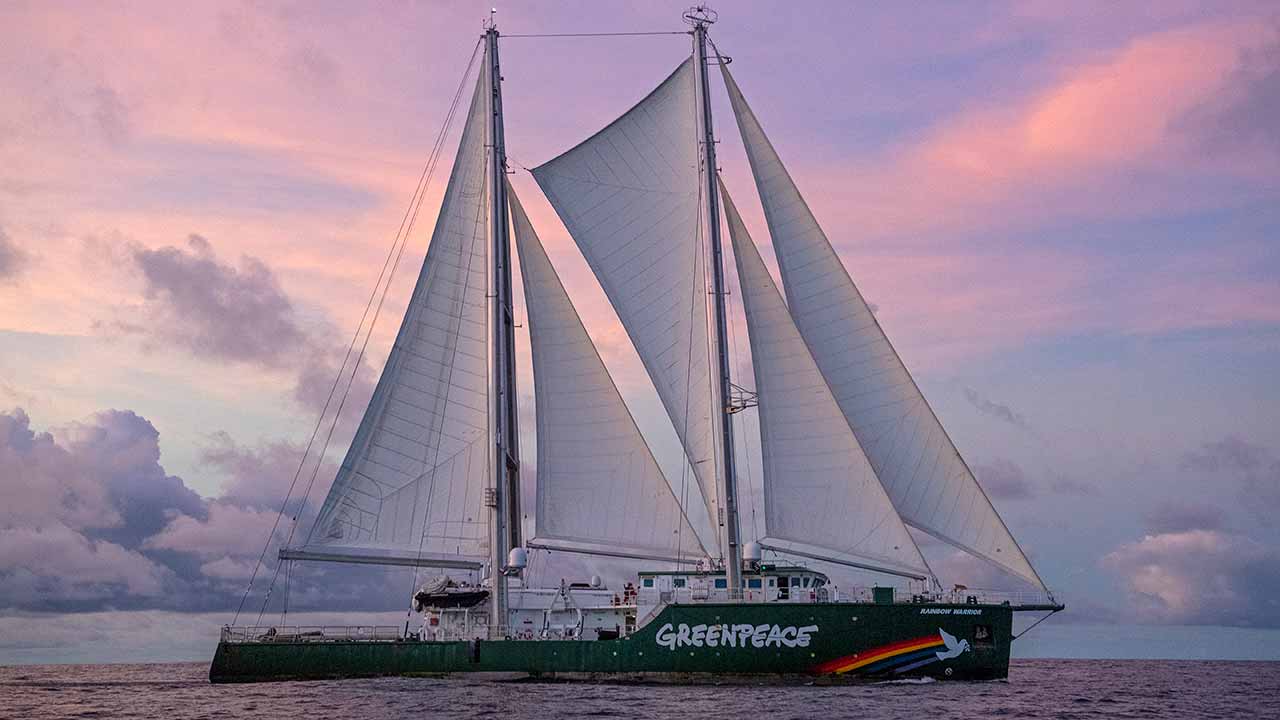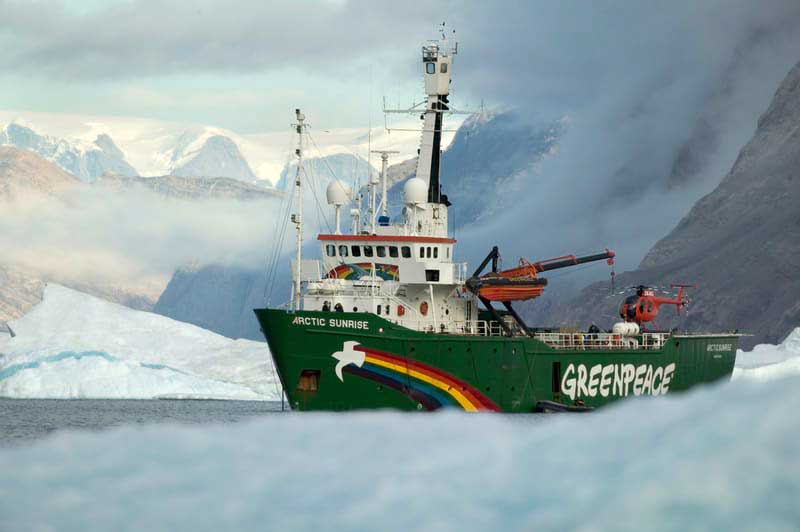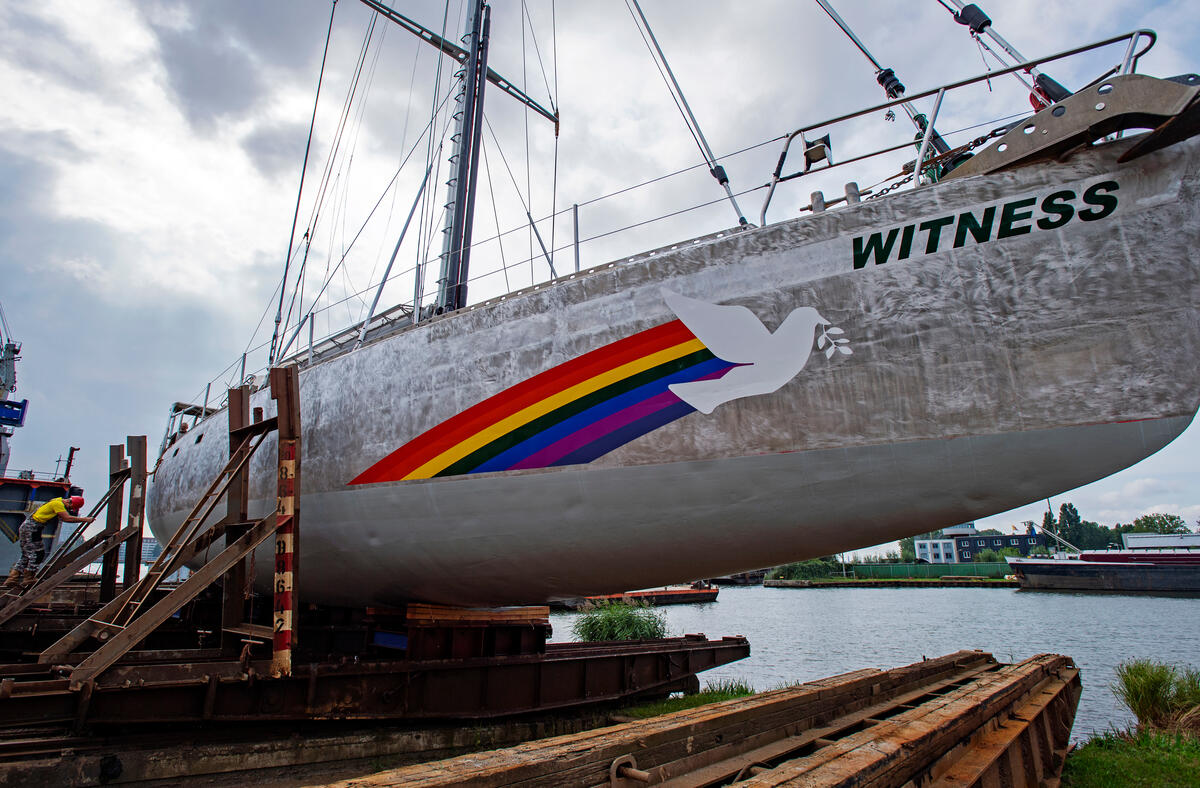GREENPEACE'S
ICONIC FLEET
How well do you know Greenpeace ships?
Greenpeace has been creating waves in the Australia-Pacific region for 47 years now, and 53 years globally. What began as a small group of environmentalists in Canada has evolved into one of the biggest environmental groups in the world, operating in more than 55 countries. Join us in a voyage across Greenpeace history with our quiz.
Need to brush up on your Greenpeace history?
Read the blog below to learn more about our iconic ships.
From helping to bring an end to nuclear tests in the Pacific, to researching plastics in our oceans; from investigating the effects of climate change in the Arctic, to blocking shiploads of illegal timber leaving the Amazon – our ships are fundamental to Greenpeace campaigns.
Our Origin
Greenpeace was born at sea. On the 15th September 1971, a group of pioneers set off from Vancouver in the Phyllis Cormack – a 25 metre fishing boat – to protest US nuclear testing activities taking place off the coast of NW Canada. This group of activists eventually became Greenpeace.
Since then, Greenpeace has gone global, campaigning for the environment in over 55 countries. Greenpeace Australia Pacific emerged in 1977, with activists putting themselves in between Australia’s last whaling station and sperm whales off the coast of Western Australia.
From the very beginning, our ships have been at the forefront of our campaigning; allowing us to take to the seas where big polluters think no one’s watching and document, protect, and take action against environmental destruction.
Our campaigning vessels now look a bit different to the trusty Phyllis Cormack fishing boat.
Have a look at what our current international fleet looks like…
RAINBOW WARRIOR III
The Rainbow Warrior is an undisputed icon. Synonymous with breaking boundaries and fearless campaigning, Greenpeace has sailed with the name Rainbow Warrior since 1978, with three different vessels bearing this iconic name.
Seven short years after the Rainbow Warrior first took to the seas, a mission to document nuclear testing saw a government choose to respond to peaceful protest with deadly force. French secret service agents bombed the Rainbow Warrior while it was moored in Auckland, leading to the tragic loss of a dear friend and crew member, Fernando Pereira. Eventually, the French government took responsibility, and two agents involved in the crime were imprisoned.
After the bombing, the ship was given a resting place at Matauri Bay, in New Zealand’s Cavalli Islands, where it has become a living reef, attracting marine life and recreational divers alike.
Greenpeace replaced her with a new vessel, and for 22 years the second Rainbow Warrior campaigned for a green and peaceful future. In 2011, the new Rainbow Warrior III, the world’s first purpose-built environmental campaigning ship, readied herself to carry on the original Rainbow Warrior’s spirit. It’s a spirit that will always live on, and goes to show that you can’t sink a rainbow.
Last year, the Rainbow Warrior III sailed across Australia and the Pacific to strengthen our campaigns at sea. The Rainbow Warrior III took our crew along the coast of Western Australia, confronting the biggest proposed fossil fuel project in all of Australia, then toured across the Pacific on a mission to uplift Pasifika voices calling for climate justice.


ARCTIC SUNRISE


Designed to weather the elements, the Arctic Sunrise has witnessed the wonders of the coldest places on Earth. It’s been part of the Greenpeace fleet since 1995 when it took its first trip to the North Sea to document marine pollution from offshore oil installations. Since then, the ship has been all over the planet, including the Congo, the Amazon and a three-month expedition to the Antarctic to conduct scientific research on biodiversity in the region.
On 18 September 2013, a group of activists onboard the Arctic Sunrise attempted to climb Russia's state-owned Prirazlomnaya oil platform during a peaceful protest in international waters.
A short time later, all 30 people onboard, including 28 activists and 2 freelance journalists, were arrested at gunpoint and detained for 100 days - with the threat of jail sentences of a decade or more hanging over their heads. They became known as the Arctic 30.
After intense campaigning and worldwide support, the Arctic 30 were finally released, and the controversial drilling practice in the Arctic they were protesting became a global hot topic. Their story became a reminder of the power of activism and that hope is a practice, a discipline - not an act of blind faith.
WITNESS
The Witness is the newest vessel in the Greenpeace International fleet, named as a testament to our commitment to bear witness to environmental destruction. The Witness was refitted from a South African vessel ‘Pelagic Australis’ and was launched as a Greenpeace ship in 2021.
These refits included improvements to make the vessel more ‘green’, such as solar panels and wind turbines. At 22.5 metres long, it is the smallest of Greenpeace’s fleet and, due to a lifting keel and rudder, is uniquely equipped to navigate shallow waters that are inaccessible to larger ships.
The Witness embarked on its first campaign operations in early 2022, with Greenpeace crew members teaming up with the Whale Conservation Institute to tour around the Argentine Sea, in an area where the oil industry had plans to carry out seismic explorations.
The Argentine Sea serves as the feeding ground and a migratory path of the Southern Right Whale and plays an important role in maintaining Argentine biodiversity, yet seismic is known to carry extreme risk to whales, harming and even deafening them. Tragically, whales navigate by sound so a deaf whale is a dead whale. This reckless destruction of the environment and its natural inhabitants is the exact sort of cause The Witness, and Greenpeace as a whole, were built to contend with.


365 days a year, 24 hours a day, Greenpeace ships are at sea somewhere in the world. This is only possible because of the thousands of people like you who keep our campaign work afloat!
Greenpeace is 100% funded by people just like you
Did you know: We don’t take any money from government or corporations, allowing us to stay fiercely independent in our fight for a greener, more peaceful future. This gives us the freedom to stand up against environmental destruction, no matter the source.
It also means we rely on the generosity from people like yourself who believe in what we stand for. To help power our campaigns at sea, make a donation today!

